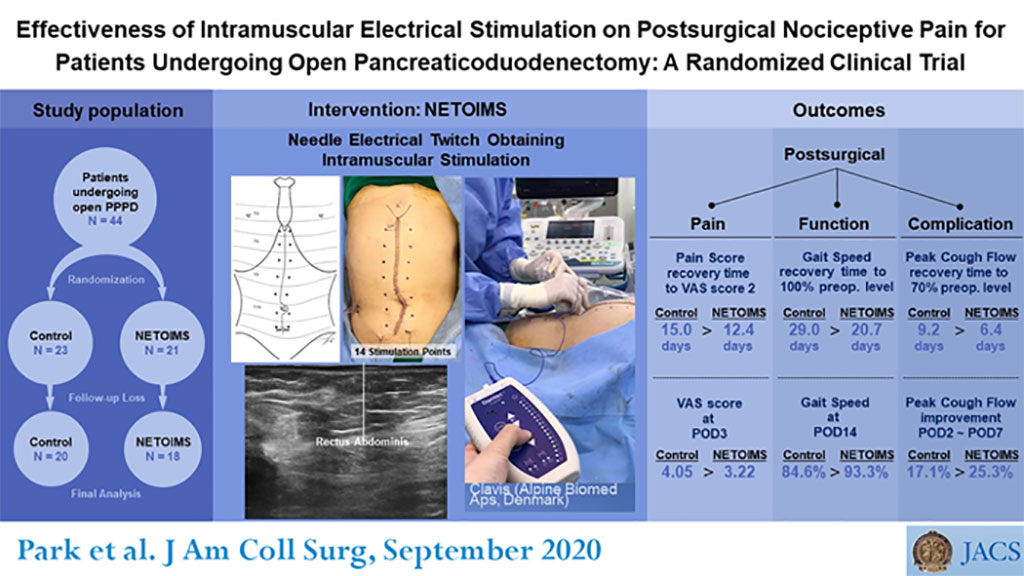Electrical Stimulation Reduces Postoperative Muscular Pain
By HospiMedica International staff writers
Posted on 13 Jul 2020
A new study suggests that intramuscular electrical stimulation can address postoperative muscle pain in patients undergoing abdominal surgery.Posted on 13 Jul 2020
Researchers at Yonsei University College of Medicine (Seoul, South Korea) conducted a study involving 44 patients who underwent pylorus-preserving pancreaticoduodenectomy (PPPD) between June 2018 and January 2019. The patients were randomly assigned to receive needle electrical twitch obtaining intramuscular stimulation (NETOIMS), or to control. The study group received NETOIMS in the transverse abdominis muscle under ultrasound guidance, immediately following surgery under general anesthesia.

Image: Intramuscular electrical stimulation can reduce postoperative pain (Photo courtesy of JACS)
Pain score, peak cough flow (PCF), and gait speed were repetitively measured from a day before surgery to two weeks after discharge. The results revealed that pain scores were significantly lower in the NETOIMS group, although PCF at each time point did not show inter-group difference. Improvement of PCF from the second day after surgery to discharge was greater and gait speed improved significantly faster in the NETOIMS group than in the control group. The study was published on June 8, 2020, in Journal of the American College of Surgeons.
“The major goal of postoperative care is to reduce the postoperative complication and to restore function as soon as possible,” said corresponding author Joon Seong Park, MD, PhD, of Yonsei University Gangnam Severance Hospital (Seoul, Korea). “Any experienced professional can safely perform the procedure without an image guide, such as ultrasound, while monitoring the tissue resistance felt at the fingertip during needle insertion, and monitoring the regular twitching responses obtained by the intramuscular stimulation.”
Surgical manipulation, such as retraction and suture, shortens skeletal muscle fibers, contributing to postoperative pain. The NETOIMS method effectively alleviates this pain by inserting a needle in the muscle and electrically eliciting twitch responses in the deep motor endplate zones of the skeletal muscles, targeting the strained muscle fibers. This technique results in the stretching of the shortened muscle fiber and improving circulation, relaxing the muscle and alleviating postoperative pain.
Related Links:
Yonsei University College of Medicine














